Triple Cities Metal Finishing Corp. and
C.H. Thompson Company, Inc.
RESULTS
AM&T’s partner, NYSP2I identified 28 specific improvement opportunities at TCMF, leading to a potential for 40% decrease in water use, and eight (8) improvement opportunities were identified at CHT, leading to a potential for 52% decrease in water use, for plating operations at these facilities. These opportunities included recommendations for counterflow rinsing, flow rate reductions, reactive rinses, flow restrictors, and tank elimination. Recently implemented reductions at TCMF will potentially save up to 5.2M gallons of water per year and a cost savings of potentially $29,000 per year. At CHT, implemented reductions will potentially save 600K gallons of water per year and nearly $6,500 per year. The resulting reductions will decrease the direct costs of water treatment and disposition, as well as the indirect costs of liabilities and environmental impacts.
- Recently implemented reductions by TCMF will potentially save up to 5.2M gallons per year of water at a cost of $29,000 per year
- Implemented reductions at CHT will potentially save 600K gallons per year of water and $6,500 per year

COMPANY
Two companies in Binghamton, NY, Triple Cities Metal Finishing Corp (TCMF) and C.H. Thompson Company, Inc. (CHT), manufacture a variety of products across several industries including defense / aerospace, automotive, electronics, and others. Metal finishing operations at these facilities include metal plating, anodizing, phosphating, wet painting, and powder coating.
SITUATION
Metal plating is a water-intensive manufacturing activity that requires a large quantity of solution and many rinse baths to achieve the conduction that attracts and binds finishing materials to the base metal substrate. For high volume and large metal parts, this process creates an enormous demand for water. TCMF and CHT sought to reduce water consumption in these operations.
SOLUTION
The New York State Pollution Prevention Institute (NYSP2I) conducted assessments at TCMF and CHT which identified opportunities to reduce water use and the associated costs at these facilities. Following these assessments, NYSP2I focused on three key areas to assist TCMF and CHT with implementing the improvement opportunities identified during the assessment.
- Plumbing modifications and water flow rate improvements
- A Failure Modes and Effects Analysis (FMEA), control plans & check sheets
- Standard Operating Procedures and corrective action plans
NYSP2I engineers advised TCMF and CHT on plumbing modifications and recommended how to make water flow rate improvements on the plating lines at the respective facilities. Recommendations were based on water quality from pH and total dissolved solids (TDS) measurements.
NYSP2I created a control plan for in-process checks for operators and procedural changes of rinse water quality and flow rates. A Failure Modes and Effect Analysis (FMEA) was developed as a risk management tool to help examine implications of any process improvement or redesign. The FMEA allows the company to identify activities that could fail and provides recommended actions.
Standard operating procedures (SOP) and training were developed to provide step-by-step instruction on corrective actions regarding water quality. The procedures will create more structure to the process, simplify and standardize operator tasks, and help reduce errors or variation that may occur. Having a documented SOP creates organizational knowledge, standardizes performance, and increases consistent product quality and performance.








